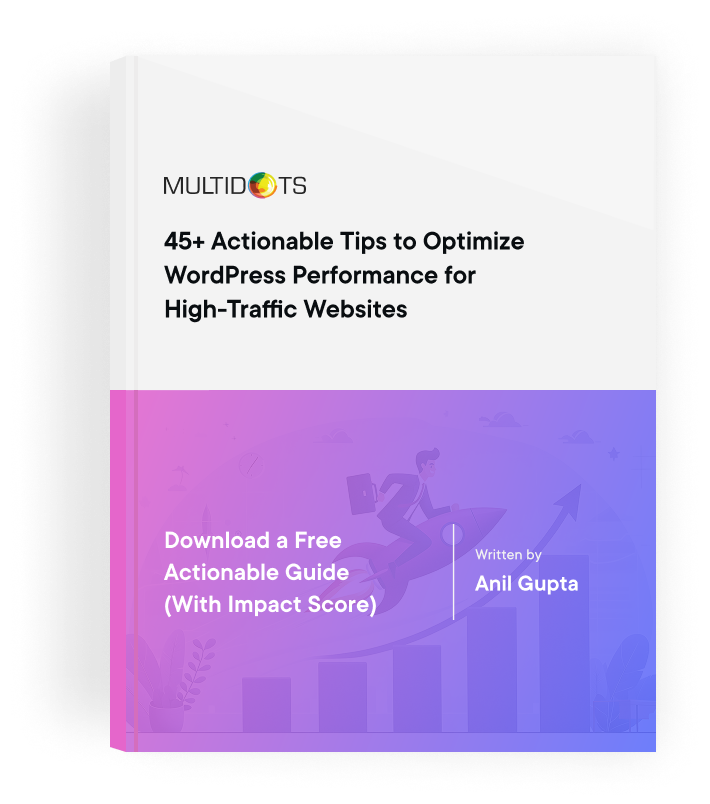Choosing Between Drupal and AEM: A Comprehensive Comparison
Compare Drupal and AEM in detail to find the right CMS for your enterprise’s unique requirements and goals

Table of Contents
With so many Content Management Systems (CMS) available, choosing the right one for your business can be overwhelming. This article will focus on Drupal and AEM (Adobe Experience Manager) to help you decide which platform better fits your business.
Recent analysis from W3Techs shows that 8.3% of the top 10,000 websites are built using Drupal, while AEM holds 5.3% of these top sites. However, when we narrow our focus to the top 1,000 sites, both CMSs have about a 5% market share.
This article compares both platforms to help you make the best choice for your business.
Understanding Open-Source versus Closed-Source Software
There is a fundamental difference between open-source and closed-source software. AEM uses closed-source (proprietary) software, while Drupal is open-source.This has significant implications for users.
Closed-source software, like AEM, typically restricts access to its code. Users lease the software through more restrictive licensing agreements that treat it as proprietary intellectual property. This means the customer or end-user loses the ability to modify or view the code powering their website. Simply put, you're paying to use the software without complete ownership.
Drupal is an open-source platform. Its users can access, inspect, and modify the source code. This allows users to tailor the CMS to their specifications, encouraging collaboration and innovation within the diverse community working with Drupal.
Typically, open-source environments are chosen so developers have complete control over everything on their servers, including their websites and content management applications. For example, developers can create new modules that extend Drupal’s functionality, apply security patches, and make other enhancements.
A Deep Dive into Drupal and AEM: Key Functionality and Features
AEM and Drupal have many benefits, but it's important to note that they both have a steep learning curve. Implementing and maintaining either platform will require the expertise of skilled developers, whether in-house or contracted.
It's also worth mentioning that Drupal is written in PHP, whereas AEM is written in Java. Understanding the underlying technologies can provide valuable context as we explore their functionalities.
Drupal and AEM have unique strengths and weaknesses, but choosing between them will ultimately depend on your project's specific requirements, your team's expertise, and your budget.
That being said, let's take a closer look at both platforms.
Suggestion 1: Drupal versus AEM
While AEM may entail significant upfront licensing costs and limited developer availability, Drupal's open-source model offers cost-saving opportunities coupled with a larger talent pool and faster project deployment.
In short, AEM is a commercially licensed platform from the very beginning, while Drupal is technically free. When you're considering any platform, including open-source options, you should take into account any hidden costs that might appear later.
AEM, as closed-source software, requires users to pay for licensing. This is a significant upfront cost. Also, since it’s not as widely adopted as alternative products, finding developers proficient in AEM may be challenging and costly. If AEM specialists are in short supply, expect higher development costs.
Drupal's open-source nature means it's freely available. There are no licensing fees. However, users still need to pay to host their Drupal site, even though there’s much more flexibility in choosing hosting packages tailored to their needs. This often results in lower total costs compared to AEM licensing fees.
The availability of developers proficient in Drupal is much bigger than the pool of AEM developers. This means you have a broader talent pool to draw on, which can lead to cost savings and quicker turnaround times for Drupal projects.
Suggestion 2: Open-Source or Closed-Source?
Ultimately, Drupal and AEM are both considered secure platforms, each with its own approach to protecting sites against cyber threats.
Why is the debate between open-source and closed-source platforms often centered around perceptions of vulnerability?
It's commonly believed that open-source software may be more vulnerable to cyber threats due to its transparency. It is true that with open-source platforms like Drupal, threat actors have the same access to the codebase as everyone else, so they can study it for weaknesses and vulnerabilities. However, this transparency also enhances security.
The vast community of open-source developers includes many people who actively scrutinize code they use, like Drupal, so they can identify and patch vulnerabilities and bugs. For example, Drupal's dedicated security team releases fixes for the core software and contributed modules on Wednesdays. They also have a transparent security advisory rating system that scores vulnerabilities on a 25-point scale to provide users with a clear indicator of the severity of potential risks.
It's worth noting that many high-profile and security-sensitive organizations, such as Tesla, top universities, and national governments, choose Drupal for their websites and applications. This shows Drupal's reputation as a secure and reliable platform for various projects.
On the other hand, AEM's closed-source nature inherently limits visibility into its codebase, which some users may perceive as a security advantage. Adobe maintains a dedicated security team to address vulnerabilities and ensure the platform's integrity proactively. Although AEM's proprietary code provides some level of secrecy, it also means that if a threat actor gets into the codebase without permission, they could take advantage of unknown weaknesses without being noticed by a large group of people.
Suggestion 3: Which Platform is More Scalable?
Drupal has the edge, but the gap is closing.
For enterprise sites, scalability and performance are top concerns. You need a CMS that can handle high traffic volumes and deliver content quickly and reliably.
Both Drupal and AEM offer features to help with scalability, such as caching, load balancing, and Content Delivery Networks (CDNs). However, Drupal has an edge in performance out of the box.
Drupal has a reputation for strong performance thanks to its lightweight architecture and active community of developers who continuously contribute performance improvements.
However, AEM has improved its scalability, particularly by introducing AEM as a Cloud Service. This new offering leverages Adobe's cloud infrastructure for auto-scaling and other performance enhancements.
Suggestion 4: Which CMS is Most Flexible?
Drupal is the clear winner here.
Drupal, often known as a platform for "ambitious site builders," is designed for endless customization. It allows its users to tailor websites to their exact specifications and offers flexibility in design. Whether crafting intricate user experiences or implementing complex workflows, Drupal's customization capabilities make it a preferred choice for organizations with unique requirements.
While AEM has many features and capabilities, it tends to be more rigid in terms of customization. Its closed-source nature limits users' ability to modify and extend the platform to suit specific needs. AEM is great for integrating with other Adobe products, such as Adobe Analytics and Adobe Target. However, integration with third-party applications may be more limited, so this is another field in which Drupal takes the lead.
Drupal has a vast repository of third-party integration modules available, from eCommerce platforms to CRM systems, giving its users smooth interoperability with diverse tools and technologies.
Suggestion 5: Ease of Use and Learning Curve
Neither CMS is a simple "plug and play" solution that your team can pick up overnight. However, Drupal uses a more common language.
One of the first things to consider is the learning curve for each platform. Both Drupal and AEM are powerful tools, but that power comes with complexity.
That said, AEM is generally considered to have a steeper learning curve than Drupal. As a proprietary platform, AEM has its own unique tools and interfaces that can take some time to master. It's built on a Java stack, which may require additional training for your developers if they are unfamiliar with that language.
On the other hand, Drupal is built on PHP, a more common language, which may be easier for your team to learn. Drupal also has a larger community of developers and users, which means more resources are available for learning and troubleshooting.
Suggestion 6: Analyzing Support Options
Ultimately, the choice between AEM and Drupal regarding support hinges on individual preferences and the organization's specific needs.
When starting with any CMS, you always want to consider the support offered.
Part of the licensing fee with AEM provides users access to dedicated support teams. This means users have access to assistance for maintenance issues 24/7. Additionally, AEM provides community resources for users to exchange knowledge and seek assistance. However, the AEM community, while available, is not as large or active as some other CMSs, potentially limiting the effectiveness of community support.
Drupal, however, has a vibrant and highly supportive community. Users facing issues or looking for advice can head to Drupal forums, where they'll often receive prompt and helpful responses from fellow community members. While Drupal lacks a dedicated support team, community support compensates for this, offering invaluable assistance to users across various topics.
It's also worth noting that some hosting providers may offer support services for Drupal users, further increasing the support options available.
WordPress: an Alternative Enterprise CMS
When looking for a CMS for enterprise-level needs, Drupal and AEM are often top contenders. However, it's always important to see what WordPress offers, too.
WordPress is the most popular CMS globally, powering over 24% of the top 10,000 websites. Despite its reputation as a platform for blogs and small websites, WordPress offers capabilities that make it a great choice for enterprises. Like Drupal, WordPress is open-source, allowing users to customize and extend the platform to meet their specific requirements. WordPress is also extremely user-friendly, making it the ideal solution for organizations aiming to provide multiple teams with publishing capabilities.
One of WordPress's most popular features is its extensive ecosystem of plugins and themes. With thousands of plugins available, WordPress users can easily enhance their sites with additional features, from eCommerce to SEO optimization. Similarly, the sheer volume of themes allows for limitless design possibilities, ensuring enterprises can create unique and visually stunning websites tailored to their brand identity.
WordPress's flexibility allows for custom builds, ensuring that unique site requirements can be met effectively. Additionally, the vast pool of WordPress developers worldwide provides businesses with a diverse range of talent, ensuring they can find the expertise needed to bring their vision to life efficiently.
Take Your Website to the Next Level With Multidots
If you're considering migrating your site from AEM or Drupal to WordPress, Multidots can help. As a WordPress VIP Gold Partner, Multidots specializes in creating enterprise-level sites on WordPress.
Migrating a your AEM content is a significant undertaking that requires careful planning and execution to minimize downtime and the risk of data loss. With Multidots, you can rest assured that experts will handle your migration process. Our team of professionals manages migrations, manually transferring sites to WordPress to ensure accuracy, reliability, and no downtime!
The Final Decision: Choosing the CMS That Aligns With Your Business Needs
Both Drupal and AEM are great CMS options, each with its own set of strengths and weaknesses. However, WordPress should be considered a viable alternative.
WordPress combines the best of both platforms. It has Drupal's open-source advantages while being far more user-friendly. With endless opportunities for customization and integration and a vast ecosystem of plugins and themes, WordPress provides a versatile and scalable option.
If you’re currently on AEM or Drupal but have changed your mind and want to migrate to WordPress, Multidots can help you effortlessly transfer your site. Whether you're considering transitioning from AEM or Drupal or exploring WordPress for the first time, our team of experts is ready to assist you every step of the way.
Contact us today to discuss how we can help!
Feel free to schedule a quick call with our migration expert.
Contact Us
